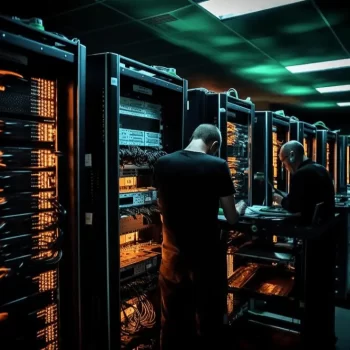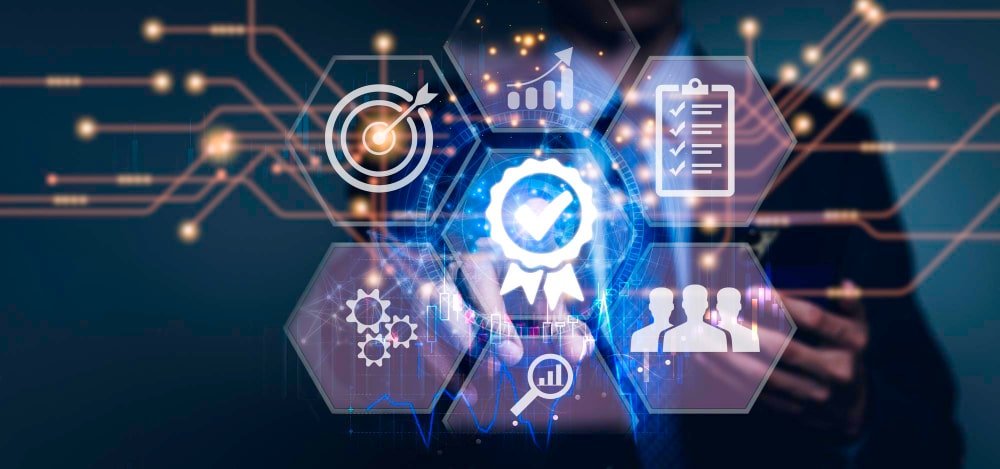If you like fashion and frequently go shopping for new clothes, you may have encountered this experience. Once you enter a multi-brand retail store, you will notice a series of micro-store setups for each brand. The store is designed to give shoppers a grand view of all the brands under one roof. The convenience of categorized displays would help you select a brand that resonates with your choice of style, colour, and price.
You would walk out of the store, often in a shorter period, with satisfaction and happiness. Now, replace multiple clothing brands with various IT teams such as DevOps, SecOps, cloud infrastructure, database, and networking. And the categorized display is the AIOps. It is at the center of various IT services, helping automate, streamline, and scale IT and business operations.
Though AIOps is the backbone of a modern digital organization, it has to navigate through some uncharted territories in 2025.
Related blog: MSPs and AIOps: How to get the best of both worlds
User Interface and Learning Tools in AIOps Platform
In a recent user response survey by G2.com, 42% of the respondents indicated they liked their AIOps software because of its user-friendly interface. As AIOps are meant for tech-savvy users, there is a possibility of not paying enough attention to building a simple and easy-to-navigate user interface. But that need not be the case.
The users also suggested they prefer a platform with a quick learning curve, avoiding complexities. AIOps platforms must create bespoke learning tools such as personalized onboarding materials, mock-up environments for practice, virtual bot tutors, instant feedback loops, and real-time instructional modules to fast-track the learning of new users.
Rejig of Cloud Environments Demands Agility

Many IT organizations are transitioning to an IT environment comprising public and private cloud services, hybrid IT, and on-premise solutions to mitigate the rising cloud deployment costs and control operational expenses. Also, prudent IT teams should avoid the perennial vendor lock-ins when managing distributed cloud IT infrastructure. This new rejig of the cloud environment calls for an agile AIOps platform that can dynamically adapt to evolving needs, process data from multiple systems, discard silos, cut through the noise, streamline and automate operations, and provide a unified view of the entire IT landscape regardless of the scale and complexity.
Cyber Security and Data Privacy Concerns are Real
A recent poll on LinkedIn and Twitter by a digital transformation thought leader revealed that 70% of IT leaders consider cyber security and data privacy their top concerns. Data theft creates economic losses and costs the trust of customers. AI’s rapid acceptance and deep penetration in enterprises is a double-edged sword. On the one hand, AI identifies patterns and pinpoints looming cybersecurity threats.
At the same time, enterprises are opening up their entire data repository for AI tools. So, when implementing AIOps in IT modernization programs, there should be a well-defined guardrail for AI as part of the implementation. The guardrail should cover strategies, processes, and tools to eliminate misuse, protect user privacy, and establish transparency.
Making Meaning Out of Data will be Challenging
Gathering, integrating, and interpreting a humongous volume of data can be difficult for AIOps as enterprises continuously add new layers of technology. The more complex the IT infrastructure, the higher the volume of data. AIOps has to deal with different data types, including real-time streaming data, archived data from legacy systems, structured data, semi-structured logs, and trace and event data.
AIOps is increasingly utilized for predictive maintenance, which requires storing each instance of data from hundreds of thousands of devices. Predicting potential downtimes and identifying possible performance dips are possible only when AIOps sift through data, like finding a needle in a haystack. If existing IT systems lack the capacity to manage expanding data volume, AIOps and digital transformation programs are prone to fail.
Playbook Creation is Mandatory for Consistent Response
Historically, IT organizations depended on in-house trained system agents to troubleshoot issues. They have grown with the organization and are aware of the technology stack and how it can go down. They have a mental schema of anomalies and failure patterns, and this knowledge is confined to a few individuals. That is the reason for the inconsistency in resolving incidents.
Modern organizations are building playbooks on various incident management categories using AIOps. These playbooks will guide system agents and provide step-by-step procedures to handle any incidents, ultimately ensuring consistent response. AIOps also help categorize and prioritize incidents based on potential business impact and suggest appropriate playbooks to follow in real-time. If you haven’t thought about incident management playbooks, 2024 is the right year to start.
Change Management is Imperative for ITOps Teams
AIOps will not replace people in ITOps teams, but it is poised to shake up conventional ITOps routine tasks. The L1 tasks and repetitive IT help desk asks are already taken over by virtual chatbots. If AI can help better handle micro-level activities, people can spend their energy on more strategic activities. In the pre-AI era, the focus was on building tools to manage people, but it has now shifted to creating tools for self-learning and autonomous automation.
The permeation of AI has influenced role mergers within the ITOps teams. Instead of a dedicated cloud services agent, server administrator, DBA, and network engineer, we will only have a developer who will build and manage the automation of these specialties, with the strategic direction set by an IT leader. So, in large-scale AIOps-driven digital transformation programs, it is imperative for leaders to carefully complete change management while ensuring trust and transparent communication with the team members.
Be ready to embrace these challenges with the right mindset. Your AIOps will continue to create an impact in 2024 with less MTTR, high application availability, a reduction in IT spending, and streamlined incident management.
Related article: What is the Role of AIOps in Modern Network Management?



















